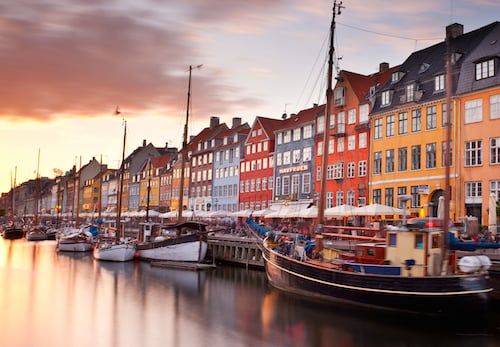Top Dialects of the Danish Language
With a population of less than 6 million, Denmark is one of the more sparsely populated countries in the world. Because of this, you might expect that the Danish language — the sole official language of Denmark — would be relatively uniform across such a small population. However, you’d be mistaken: Danish has a number of distinct dialects, each with its own attributes and flair. Here’s some of the most common ones.
Image via 达 李 / flickr
1. Zealandic
Denmark consists of several islands, the most populous of which is Zealand. Indeed, Zealand is home to Copenhagen, Denmark’s capital and largest city, as well as almost half of Denmark’s population. As such, the variety of Danish spoken on Zealand is known as the standard dialect. Many of the Danish language’s distinctive features — such as stød — are found in the Zealandic dialect. Given that it is the most common dialect of Danish, if you’re learning Danish, it’s likely that you’re learning the Zealandic variety.
2. Jutlandic
The continental portion of Denmark is called Jutland, and people who live in this mainland speak differently from those who live in Copenhagen or other regions in Zealand. In general, the Jutlandic dialect is closest to the Zealandic dialect towards the east of Jutland; as you travel west and go further away from Zealand, the dialect becomes more distinct.
For example, in Standard Danish, nouns and articles can belong to either of two genders. However, in the western portions of Jutland, this gender distinction is lost altogether. Thus, in Standard Danish, “a man” is æn mand, and “a house” is æt hus. In western Jutlandic dialects, however, both “a man” and “a house” use the same article: æn mand and æn hus, respectively.
In general, speakers of any dialect can fairly easily understand speakers in Jutland. However, this is not the case in the south: the southern Jutlandic dialect is very phonologically distinct from other dialects. In fact, some linguists consider southern Jutlandic to constitute its own dialect.
How good is your Danish? Find out by taking our free online Danish level test!
3. Bornholmsk
The Bornholmsk dialect is spoken on the Danish island of Bornholm, which is to the east of mainland Denmark and close to Sweden, which is to its north. It is closely related to the Scanian dialects of the Swedish language.
Swedish and Danish are largely mutually intelligible, meaning that Swedish speakers can understand Danish, and vice versa. The Bornholmsk dialect is seen as something of a combination of both Swedish and Danish, as it contains phonological and grammatical features of both languages. As such, there’s some doubt as to whether the Bornholmsk dialect belongs to Swedish or Danish; most linguists agree, however, that it is most properly classified as a dialect of Danish.
4. Gøtudanskt
 Image via Vincent van Zeijst / Wikipedia
Image via Vincent van Zeijst / Wikipedia
The Faroe Islands are located in the Atlantic Ocean to the north of Denmark, and are home to about 50,000 people. Due to the region’s isolation from the rest of Denmark, the variety of Danish spoken there — known as the Gøtudanskt dialect — is quite distinct from Standard Danish. Most notably, it is strongly influenced by Faroese, the language native to the region, especially in terms of pronunciation and intonation.
Indeed, Danish may have only a few million native speakers, but due to Denmark’s geography, versions of the language spoken in different regions can be quite distinct from each other. If you’re interested in learning Danish — whether it be Zealandic, Jutlandic, or Bornholmsk — the best way to do so is to take courses led by a qualified native Danish speaker. Send us a quick inquiry to see how we can help you master Danish.



